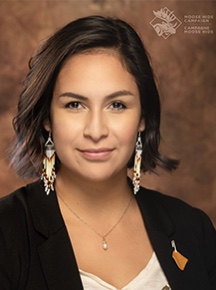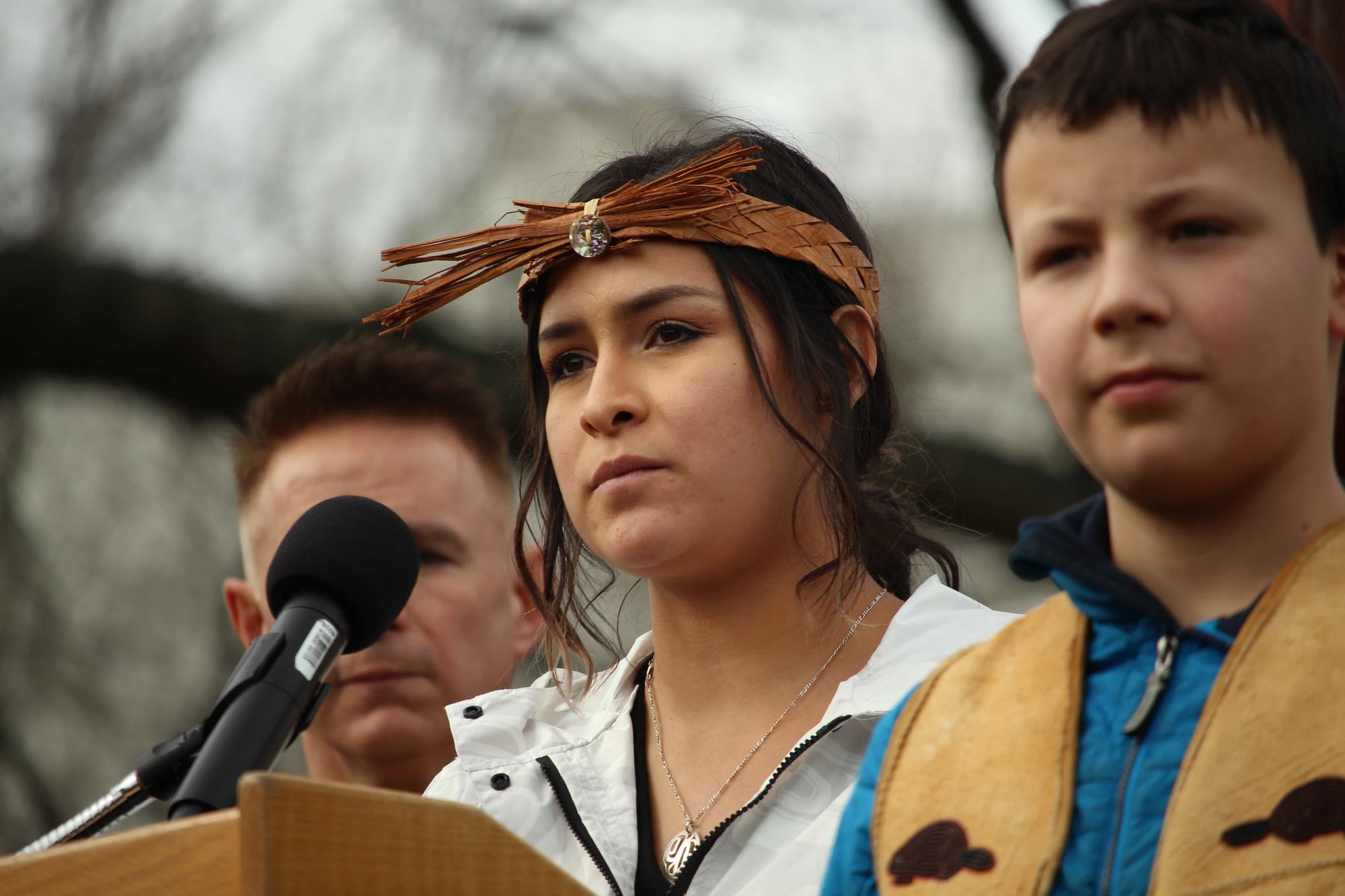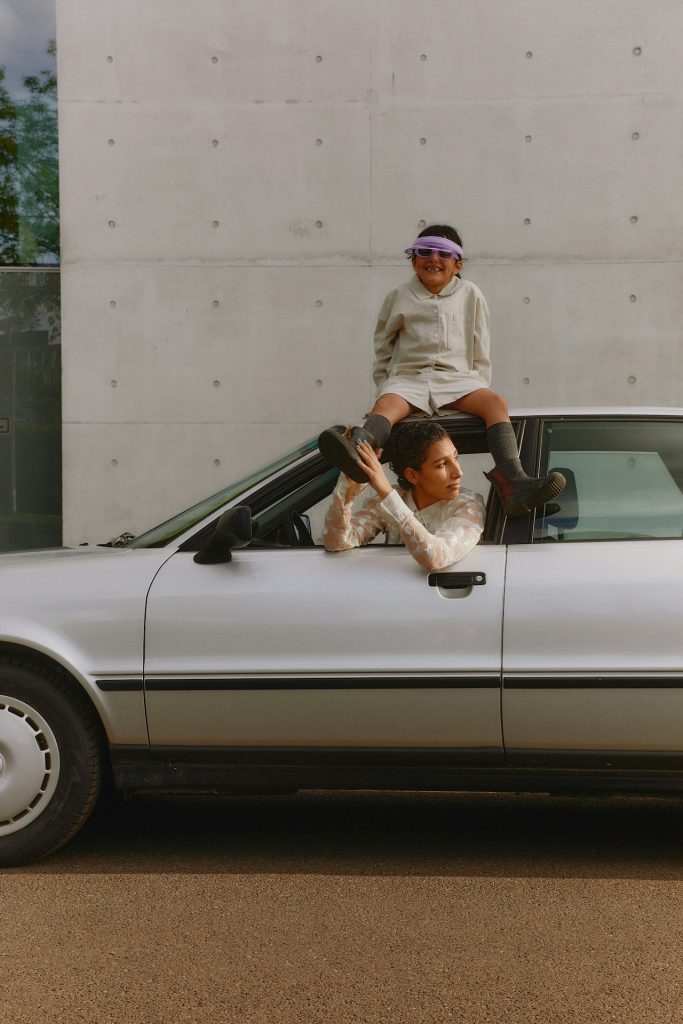Women experience violence at an alarming rate. Half of all Canadian women have experienced some sort of physical or sexual violence since the age of 16.
Raven Lacerte, part of the Carrier First Nation from the Lake Babine Nation in central British Columbia, is working to end violence against women and children by calling on the help of men and boys. Thursday, February 11th marks the 10th anniversary of the Moose Hide Campaign, an organization that works to end violence against women and children.
We talked the Lacerte about the meaning behind the Moose Hide Campaign, how it’s grown over the past decade and how we can show support.
Why is this issue so important to you?

There are a few things that were happening in the background that led us to this moment of inspiration and it helps folks understand more about why we got started. Some of it has to do with being a visibly Indigenous person and my own lived experiences with violence and witnessing violence growing up in my life—knowing, witnessing and experiencing all of the different kinds of cycles of violence that exist within my own family. My mom was a residential school survivor, and my dad went to a day school, as well. But also because in my communities, we grow up hearing about all the violence that happens towards women and children across Canada, not just Indigenous people, but all women and children.
There’s this place called the Highway of Tears where dozens of women have either gone missing or been murdered from along that stretch of highway. Our family has some loved ones that have been murdered there. We’ve seen what that can do to our families and our communities. We want to be able to do something to make that highway a safer place for women and try to wipe away some of those tears.
We think that hurt people hurt people. So, we’re not calling out and pointing fingers, we are calling in. When people are hurting, they go and hurt other people to help make themselves feel better. What we want to do is help those hurting people, so they don’t have to hurt so much anymore and maybe they won’t hurt others.
Tell us a little bit about how the idea for the Moose Hide Campaign came to be.
My dad went to a conference in Vancouver about ending violence towards women and children. There were 285 people at that conference and only four of them were men. He, as one of four men, was looking around the room like “Where the hell are all the men?” Men are predominantly doing the violence towards women and the fact that they’re not part of the conversation isn’t right. There have been so many women’s serving organizations that have been bearing the burden of advocacy and support, so we really recognized a need for more men and boys to be involved in the conversation and work on prevention. We want to make a cultural shift in our society to a place where men and boys know what it’s like to be a strong, healthy man and what healthy relationships are.
I was 16 when [my father and I] first got the idea to start it. We were out hunting along the Highway of Tears, and we just got this idea. We got this moose, and I was cleaning it out. It was right around the same time that Jack Layton had passed away. He had started the White Ribbon Campaign, which is also bringing more men and boys to end violence. We were talking about that and we were trying to find a way to have an Indigenous lens on this work, as well. We were sitting on our beautiful Carrier territory, the land of our ancestors, and realizing how beautiful the land is, how much medicine the land has and how much capacity the land has to carry for and heal us.
A moose goes out and eats all of the land that is the same land that my ancestors had been walking on. Then, we eat that moose who ate the land that my ancestors had become a part of. It’s all this big life connection. We thought, “what if we tan up this moose hide?” Normally we don’t do anything with the hide. In the traditional way, people would tan the moose hide, but it takes about 75 hours to tan one moose hide. So, we decided to tan it up, cut it up into a bunch of little squares and then ask people to wear that as their everyday commitment and their everyday reminder to not do violence in their lives.
Who can wear a pin?
When we first started, it really was a focus, and it still is, on bringing more men and boys into the conversation. Right away, women and folks in the LGBTQ2S community were like “what about us? Can we wear the pin?” And our answer is always yes, every single person can wear a moose hide pin. It’s about the awareness raising. It’s about those commitments. Everyone can be violence-free in their lives, it doesn’t just have to be men. So, we can all commit to healing and talking about it and raising our young ones in a good way.
Why Moose Hide?

Traditionally, our hunters were men going out and doing the hunting and gathering. We thought that maybe this could be a symbol that would help honour the masculine side of all of us and honour that healthy warrior spirit. Because healthy masculinity means people can still be warriors but not be violent. By engaging more men and boys, we wanted something that they would feel a connection to and something that they could feel proud to wear and honour that side of them. Moose are also iconically Canadian. It is one of those things that other cultures and backgrounds are able to identify with. We do have a synthetic moose hide pin, as well, for anyone that is not comfortable wearing a piece of moose hide.
How has the campaign grown in the last 10 years?
At the beginning, we just started practicing having those conversations with our friends and our family. Then, random people started asking us about it. Eventually, there became a need to send more pins across the country when people started hearing about it. So, we hired otherwise unemployed, Indigenous women to produce the pins for us. Now, over 2,000 communities have ordered moose hide pins and started their own moose hide campaigns across Canada. We just believe that we were entrusted with this medicine, my dad and I, and it’s our responsibility to help spread that medicine in a good way and be the caretakers of that medicine. Now, we have handed out well over 2 million moose hide pins. Our goal is to get 10 million moose hide pins sent out across Canada.
What is the February 11th event?
Our fast is coming up on Thursday and we are anticipating 75,000 participants. Normally, we would meet in person, one event in Victoria and one in Ottawa, but we weren’t able to reach that far and wide. Our goal is to get 1 million Canadians fasting together on the same day. This year, we are going online, we’re having a big virtual gathering. We ask you to fast from sunup to sundown, just for one day. It’s really to deepen your commitment and your understanding of being in a ceremony. It really hits that reconciliation piece for many non-Indigenous folks that maybe don’t know a ton about Indigenous cultures and want to know more and be part of a ceremony but never had the opportunity. Everyone is invited.
We’ll have some speakers that will be sharing some words. One of them is Swil Kanim from the Lummi Nation and a world-class violinist. We have Michèle Audette speaking, one of the commissioners for the Inquiry into Murdered and Missing Indigenous women. And then a famous Tik Tok-er, Tia Wood, an Indigenous person who really honours her culture and does singing, dancing and shows her regalia in her Tik Toks. We also have 13 different interactive workshops available for people to choose from throughout the day.

What is the significance of fasting?
My dad is from a fasting family. For him, he does four days and four nights without food or water. The point of it is to bring yourself as close to dying as you can—you can’t go much longer than four days and four nights without food or water. We believe that veil to the spirit world thins when you fast. You are offering up the pain and hunger and discomfort as your way of connecting. But there are so many old cultures that fast when there’s something important at hand. So, we are inviting people into the fast for whatever that means for them as a time to deepen your commitment, deepen your understanding. It’s a chance for self-reflection.
Often, you get to lunchtime and you’re like “oh, dang, I’m getting hungry now. I should grab a piece of food.” But then you’re like “Oh wait, I can’t, I’m fasting.” And you ask yourself why you are fasting. That’s the point we want you to get to. We are offering a little bit of pain and suffering in hopes that other people do that. We believe that the more people are fasting together, the more the spirit world is going to be shining down on us with smiles on their faces.
To order your own, free moose hide pin (real or synthetic) or sign up for the Moose Hide Campaign on February 11th, visit their website at moosehidecampaign.ca.







